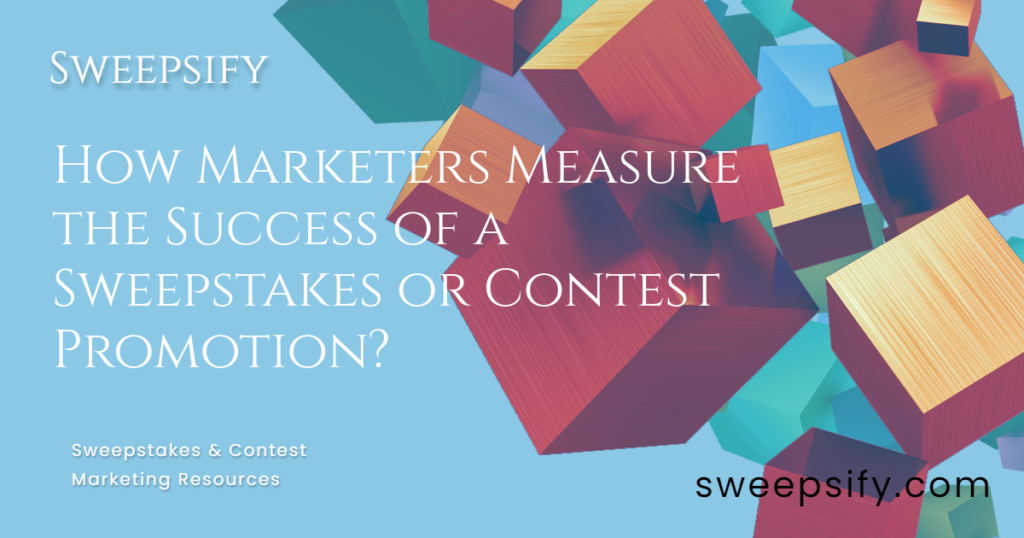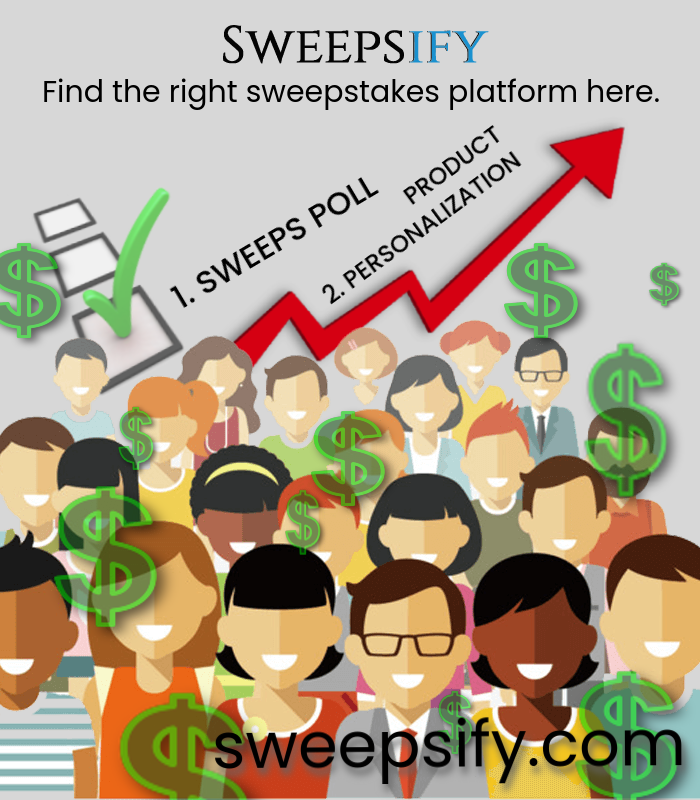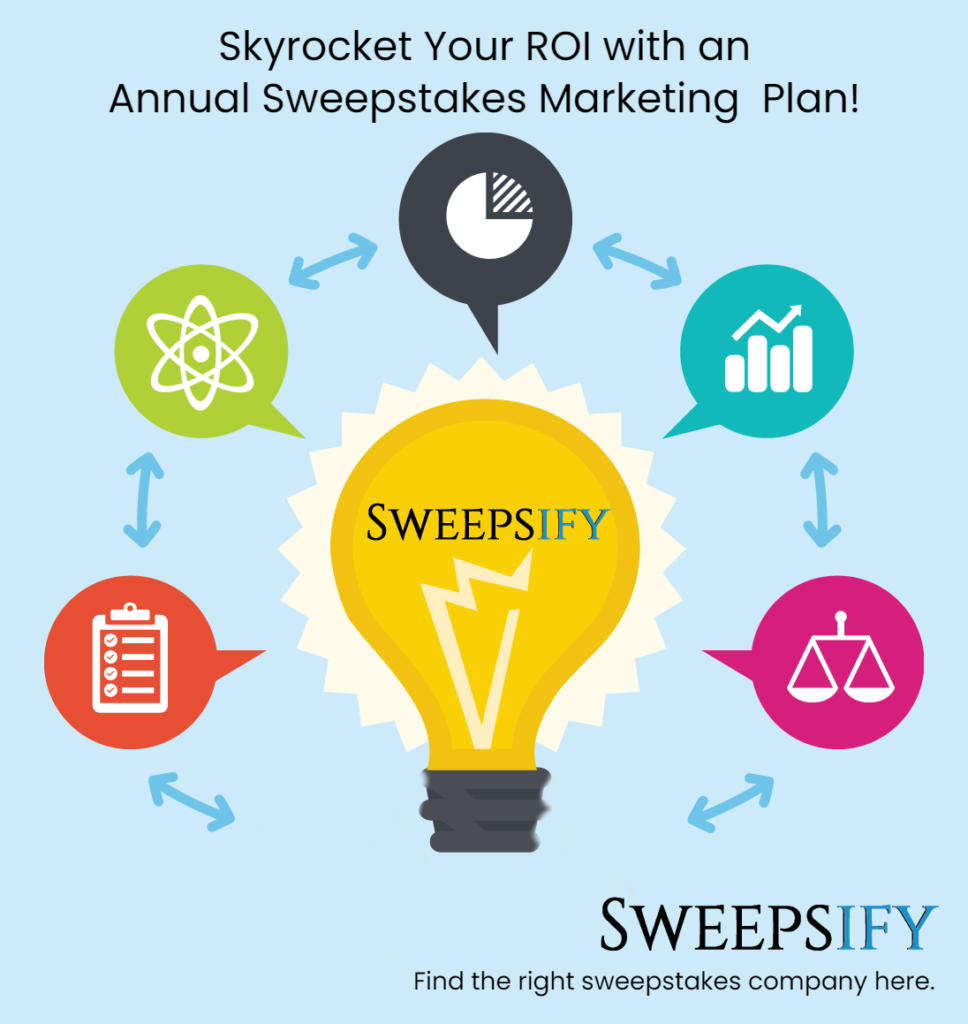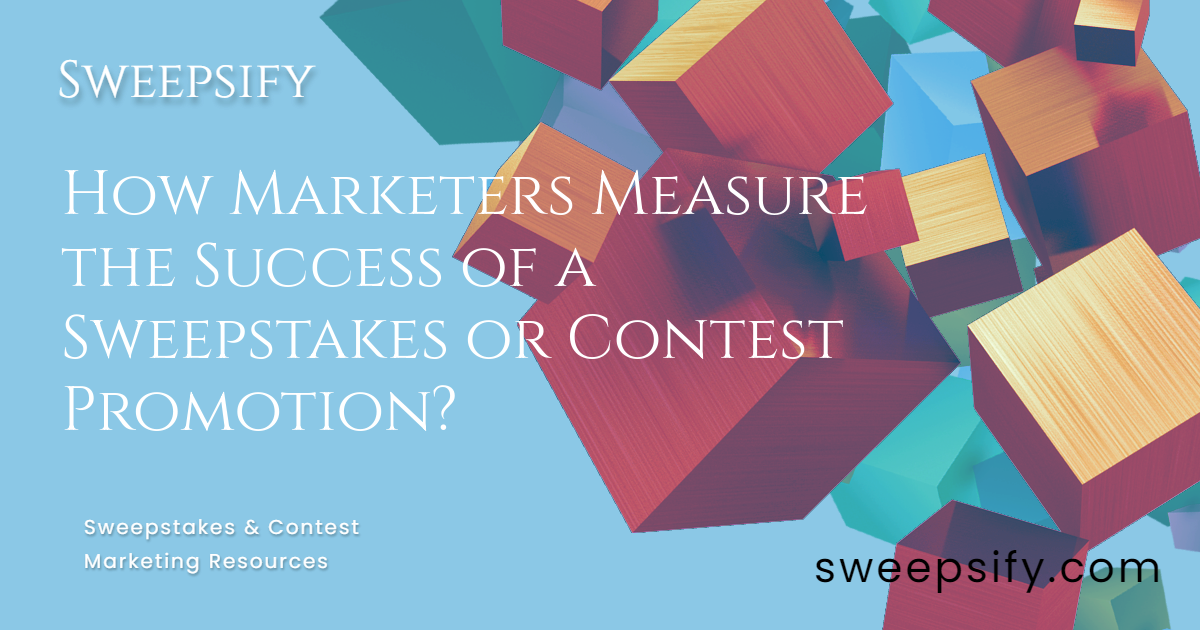Here is a list of our current affiliate partners and how we earn money
How can you measure the success of your sweepstakes or social media contest to know if it’s doing well? While there are very sophisticated martech tools and methods you can use to calculate the impact of your promotion, simple estimates can also be useful.
This is a simple success metric for a social media sweepstakes or contest: the percentage of your fan base that enters your giveaway or sweepstakes.

How Marketers Measure Sweepstakes Success
Don’t have time to read this article right now? No problem! Just tap the link below to Download it in PDF format. Please allow some time for the file to generate.
Here is what you should about how to measure the success of your sweepstakes and the exact steps to measuring sweepstakes effectiveness that you need to follow.
Article Contents
IN THIS ARTICLE:
- How do you measure the return of a sweepstakes?
- How effective sweepstakes for marketing?
- What metrics do you use to measure the success of a sweepstakes?
via GIPHY
What Factors Can Affect Sweepstakes Success Measurement?
In reality, the sweepstakes ROI calculation doesn’t tell the entire story. Organic reach on many social media platforms is limited which means that you will never reach your entire audience with every post.
Furthermore, if you run ad-supported campaigns where your sweepstakes or giveaway campaign is boosted by an advertising budget, you need to consider the added reach.
As people like, share, and comment your promotion, others on the platform that are outside of your target audience get attracted via viral sharing to participate.
Their friends and followers will see the promotion and want to join in on the fun.
Marketing KPIs You Should Track for All Sweepstakes and Giveaways
Here are KPIs to measure for every sweepstakes or giveaway, regardless of the type or marketing channel.
Return on Investment (ROI)
One of the most important components of a sweepstakes campaign is ROI. Calculating sweepstakes ROI is the practice of attribution profit and revenue growth to sweepstakes marketing efforts.
Typically, the sweepstakes ROI is used to justify marketing spend and budget allocation for future sweepstakes, contests, and giveaways.
Cost Per Lead (CPL)
The cost per lead is the amount of money that it takes to turn a sweepstakes participant into a lead or prospective customer. A lower CPL is considered ideal.
Conversion Rate
A conversion rate is the percentage of visitors who have completed a desired action. You should measure the conversion rate of visitors to participating sweepstakes entrants, sweepstakes survey completion rate, and conversion rate and clickthrough rate on follow-up offers sent during your campaign.
The conversion rate combined with bounce rate reveals a great deal about the customer experience of your sweepstakes.

Sales
Sales are purchases that can be tied directly to your sweepstakes marketing efforts from the participant clicking through to buy your product or service while your sweepstakes is still active.
Incremental Sales
Incremental sales measures the contribution of sweepstakes and giveaway promotions towards the sales numbers. Incremental sales shows how effective your sweepstakes campaigns are at generating sales.
via GIPHY
Purchase Funnel
Using multiple tools, measure the sales process for leads generated by your sweepstakes or giveaway campaign. This can help you identify new touchpoints with your brand.
Customer Lifetime Value
Customer lifetime value measures the lifetime value of your sweepstakes participants by using the following formula: “average sale per customer” x “average number of times a customer buys per year” x “average retention time in years for a typical customer.”
Multi-Channel Sweepstakes and Attribution
While it may seem like each of your sweepstakes campaigns can be measured separately, in reality there will be overlaps, especially when you advertise on multiple channels. If you want to see the most complete picture of your sweepstakes campaign, use tools to run multi-channel sweepstakes and contests and apply attribution modeling.
Sweepstakes KPIs: Use These Metrics to Achieve Your Goals
It’s much easier to measure the success of your sweepstakes campaigns if you have a clear idea of what your goals are.
Some ideas on goals to set for sweepstakes campaigns:
- Increased revenue and sales
- Collect first-party data and
- Build marketing buzz for on social media
- Increase audience reach
- Collect leads
- Collect poll and survey data
Subscribe Now:
via GIPHY
5 Steps to Measure the Success of a Sweepstakes Campaign
Measurement is the key to optimizing your sweepstakes and giveaway marketing campaigns. When you establish and measure KPIs for your sweepstakes campaigns, you can clearly see what works and what doesn’t.
1. Create Goals to Measure
Sweepstakes campaign strategy starts with setting a goal to measure. Measuring sweepstakes marketing effectiveness is impossible to determine after the campaign ends just by measuring traffic, clicks, and conversions.
You need to set specific goals, such:
- How many likes, comments, and shares does your content need to receive?
- How many participants will it take to be successful?
- What is a target number of pageviews that can make this campaign break even or positive ROI?
Your goals need to be something that you can measure and track in real-time as soon as you launch your sweepstakes or contest.
Free Ad Maker for Social Media and Video Advertising
Create awesome ads for your sweepstakes or contest in seconds with the Adobe Express free ad maker. Customize your advertising by including trending images, high impact fonts, and high quality design assets. Create your ads now.
ADVERTISEMENT
2. Set the Specific Timeframe
The parameters to measure the success of your sweepstakes campaign should be at least the duration of the campaign itself (typically 2-4 weeks).
Ideally, you should make sure that you can track your campaigns year round.
The time frame allows you to make year-over-year or promotion to promotion comparisons to track and measure sweepstakes and social media contest data.
via GIPHY
3. Select Success Metrics
The effectiveness of your sweepstakes or giveaway depends on hundreds of factors – your audience, your prize, your level of customer experience, your promotion methods, and much more. So how can you tell if you’re measuring the right things?
Not all of the goals you set will be easily measured in one step. As a result, it’s a good idea to select big picture success metrics so that a sweepstakes administrator can help you determine how to track these metrics using their platforms.
Here are some examples:
- Gain 100,000 social media impressions within the first week of the sweepstakes campaign.
- Secure sales from 10% of the repeat customer base.
- Collect leads on the company’s website with the goal of 10,000 views per day.

4. Draft a Sweepstakes Marketing Measurement Template
Once you decide which metrics you want to measure for your sweepstakes campaign, create a template that includes all of the KPIs you want to track and measure.
It should include:
- Your goals and success metrics
- Time frames for the sweepstakes marketing and campaign run-time.
- KPI metrics at the start, middle, and end the campaign or other milestones
- Assumptions and other known potential conflicts
- What worked well and what went wrong
- A summary of any unexpected events or effects
via GIPHY
5. Collecting the Data
If you want to turn participants into customers, that means you have to structure your sweepstakes or giveaway specifically for lead generation. The same goes for sweepstakes campaigns for increasing followers or brand awareness.
You’ll want to set a schedule to measure your sweepstakes campaign results. In order to make progress and achieve your goals, you need to track and make ongoing adjustments.
Plan to check your campaigns multiple times a day.

How to Measure Sweepstakes Effectiveness: Final Tips
You need to be able to measure sweepstakes effectiveness so that you can determine what works and what doesn’t.
With this knowledge, you’ll be able to better evaluate performance, track where your leads and sales are coming from, and spot areas for improvement.
As you work with a sweepstakes platform or sweepstakes administrator to set up your campaigns, you should:
- Make sure that your sweepstakes or giveaway is structured to achieve your ROI goals. Your martech stack should be capable of capturing all of the data you need.
- Make sure that you can track your promotional efforts from the start of your pre-launch sweepstakes marketing to the end of a “participant turned customer” making a sale.
- Make sure to track sweepstakes metrics in the same way from campaign to campaign so that you can conduct historical performance analysis of your campaigns and create sales forecasts.
You’re already familiar with basic tools like Google Analytics and Facebook Ads manager.
However, there are so many industry specific martech tools that can help you better track your marketing efforts so that you can understand your leads and customers.
While there are many solutions that can capture and analyze your campaign data, no single tool, not even a sweepstakes platform will meet your every need.
What you learn from one sweepstakes marketing campaign should feed into your larger marketing strategy and inform how you run future sweepstakes and giveaways.
Looking for a sweepstakes company to help you with your next promotion? Sweepsify helps you find top sweepstakes companies in seconds. Create your free Premium account now to get started.



